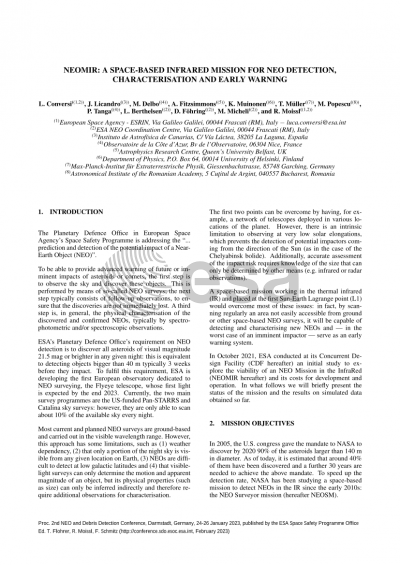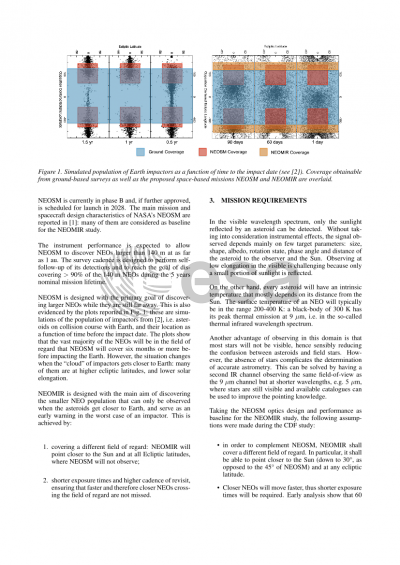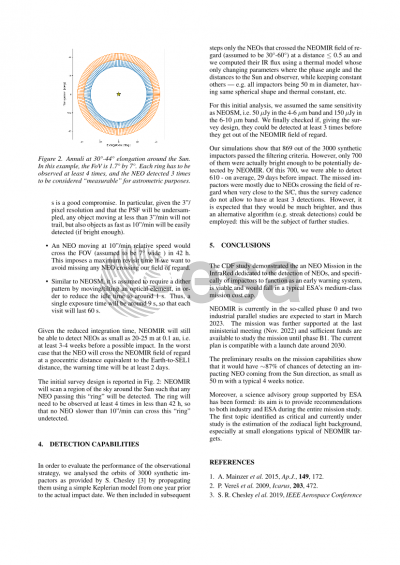Document details

Abstract
Most current and planned NEO surveys are ground-based and carried out in the visible wavelength range. However, this approach has some limitations:
1. weather dependency;
2. only a portion of the night sky is visible from any given location on Earth;
3. it is hard to detect moving objects, especially in crowded star fields;
4. visible surveys can only determine the motion of an object, but its physical properties (such as size or composition) can only be inferred indirectly and therefore require additional observations for characterization.
The first two points can be overcome by e.g. having a network of telescopes deployed in various locations of the planet. However, there is an intrinsic limitation in observing at very low elongations, i.e. at small solar aspect angles, that will prevent detecting impactors coming from the direction of the Sun.
We will present a space-based mission working in the thermal infrared and placed in the Sun-Earth Lagrange point (L1) currently under study by ESA and European industry. In fact, a NEO Mission in the Infra-Red (NEOMIR hereafter) would overcome most of the issues mentioned above: by scanning regularly an area not accessible by ground or other space-based NEO surveys, it will be capable of detecting and characterizing new NEOs and – in the worst case of an imminent impactor – serve as an early warning system.
Preview




